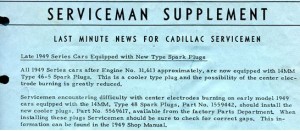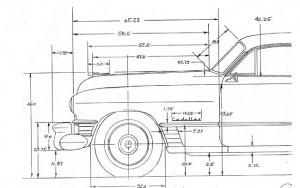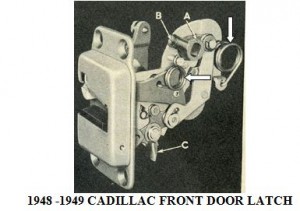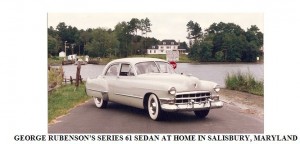Greetings and salutations, my fellow ‘49ers. Supposedly, spring has sprung although we’ve only had about 5 decent days so far here in the Northeast. It’s time to get your vintage Cadillac(s) out of mothballs and ready for another season of cruise nights and car shows. I’d like to take this opportunity to thank the many well-wishers who emailed me congratulations on my new “position” and offering words of encouragement. That was very thoughtful of you and much appreciated.
I recently received a call from our friend and benefactor, Ed Cholakian, who owns All Cadillacs of the ‘40s and ‘50s. We had a pleasant chat and Ed extended his best wishes to our chapter on its 10th anniversary. Ed has been very generous in the past, supporting the ‘49ers financially, and instructed me to contact him if we need anything. Unbeknownst to me, Ed is also an official distributor for Lynn Steele rubber products and has benevolently offered to extend a 20% discount to all members of the ‘49ers. So, if you need any Steele products, please purchase them through Ed. Thanks, Ed.
About a month ago I added yet another ’49 Cadillac to the “stable”. This one’s a model 7533X 9-passenger Imperial Business Sedan, a.k.a. a limo. I named her The Countess. I plan to pen a “Pride and Joy” article on her in a future ’49 Times.
The other two members of the “royal family” are The Duchess, a ’49 Club Coupe, and The Baroness, a ’49 model 6269 sedan.
With Jay’s blessing, I’ve decided to add a couple of new features to our newsletter. One is “Welcome New Members”, fashioned after a feature that appears in each issue of The Self-Starter. The second, also starting this issue, is called “Birth Announcements”, which will welcome members’ newest acquisitions. Please email me if you recently purchased a ’48-49 Cadillac! Be sure to provide the year and model, the name of the new “baby” if you name them as I do, and any other interesting factoids about the vehicle.
Also in the works is a series of informational articles on the Hydro-lectric system which will start with the next issue of the ‘49 Times. The series will begin with a general overview and operating principles of this system and will gradually deal with technical aspects, such as testing and trouble-shooting. Once again, I urge members to please submit items of interest for possible inclusion in future issues of the ’49 Times, such as Tech Tips, stories and pics of your Pride and Joy, and anything else relevant to our passion. We need your help; we can’t do all this alone.
Finally, I spoke with Nancy Book who, along with her husband Mike, is involved with the running of the CLC Grand National to be held in Dublin (near Columbus), Ohio August 10-13, 2011. We now have a conference room reserved for a ‘49ers chapter meeting the afternoon of the judged car show, Saturday, August 13th, from 3 to 4 pm. Details of what room we’ll be in will be available at the registration desk and will also be posted on the CLC bulletin board. We need a volunteer or two to make a brief presentation, such as a tech session, “show and tell” or anything else you feel would be of interest to the ’49ers. Please make every effort to attend this chapter meeting, even if it’s just to stop in and say “hello”.
newsletter



